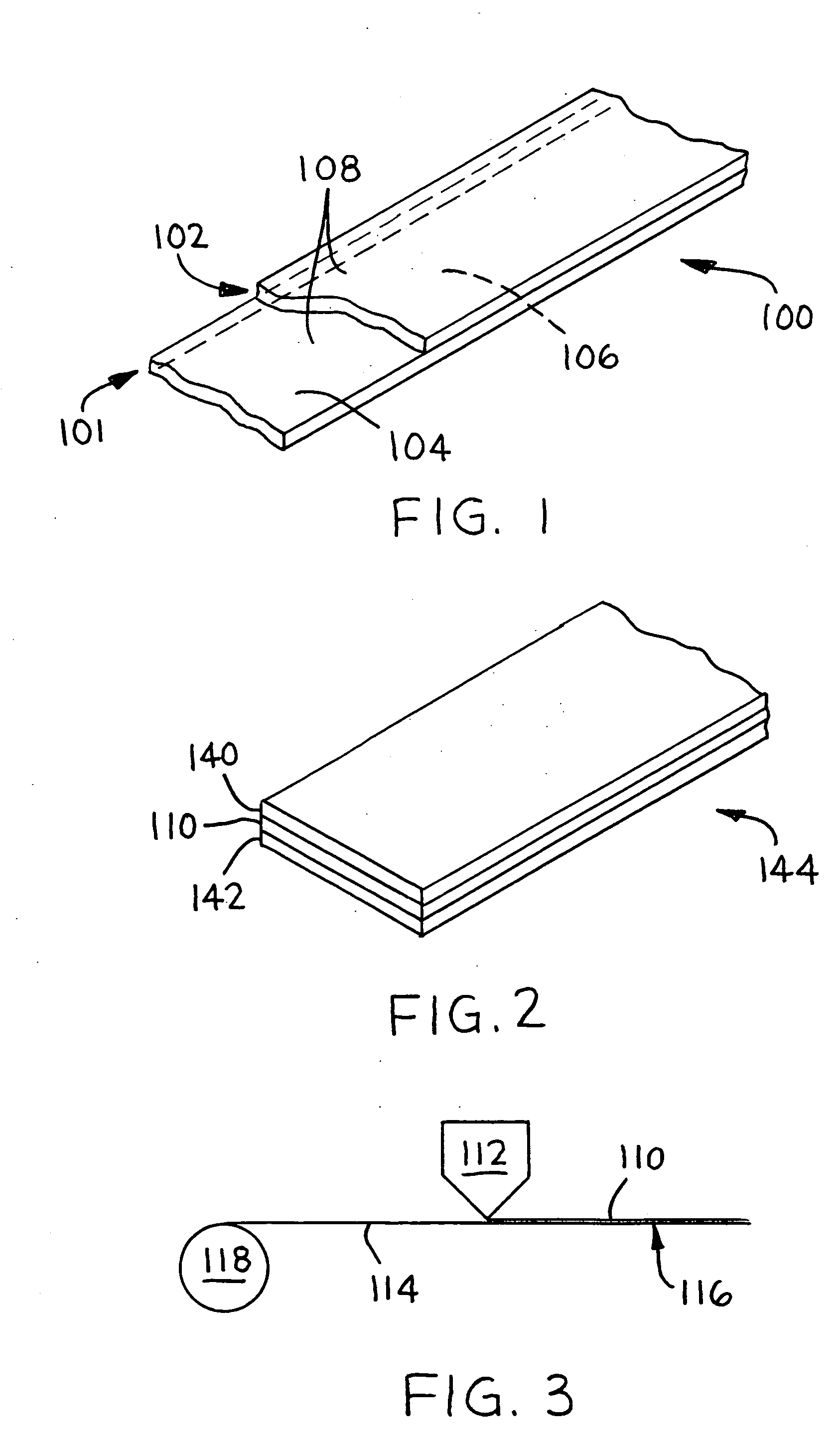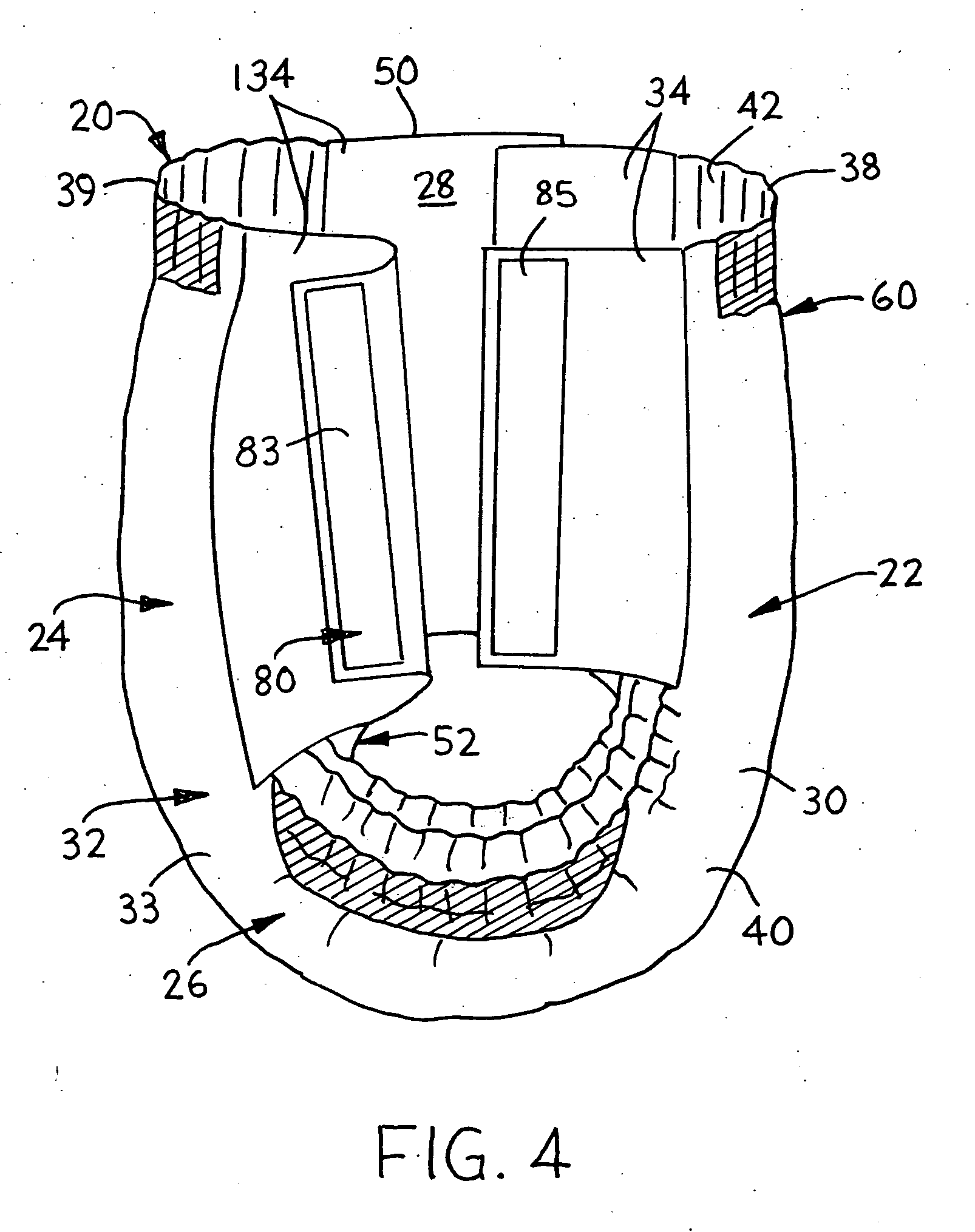Reduced-noise composite materials and disposable personal care devices employing same
a composite material and noise reduction technology, applied in the field of reduced noise composite materials, can solve the problems of reducing the ability of the human ear to perceive the noise produced, and reducing the ability of the human ear to perceive the noise, so as to increase the discreetness of disposable personal care articles, reduce the ability of the human ear to perceive, and increase the sensitivity to frequencies
- Summary
- Abstract
- Description
- Claims
- Application Information
AI Technical Summary
Benefits of technology
Problems solved by technology
Method used
Image
Examples
example 1
[0090] The door 203 was closed, and steps 11-15 were executed, with the apparatus off at all times and with no specimen in the test chamber. The ambient noise within the sealed chamber was thereby quantified.
example 2
[0091] The door 203 was closed, and steps 10-15 were executed, with no specimen in the test chamber. The noise attributable to the operating apparatus as well as additional ambient noise within the sealed chamber was thereby quantified.
example 3
[0092] In this Example, the noise produced by a LUVS SLEEPDRYS youth pant (size 65-85 lbs), purchased in 2003 and manufactured by the Proctor and Gamble Company, a corporation having offices in Cincinnati, Ohio, was quantified. This product included a full-length, thermoplastic, polymeric film layer within the outer cover.
PUM
| Property | Measurement | Unit |
|---|---|---|
| wave frequencies | aaaaa | aaaaa |
| resonant frequency | aaaaa | aaaaa |
| resonant frequency | aaaaa | aaaaa |
Abstract
Description
Claims
Application Information
 Login to View More
Login to View More - R&D
- Intellectual Property
- Life Sciences
- Materials
- Tech Scout
- Unparalleled Data Quality
- Higher Quality Content
- 60% Fewer Hallucinations
Browse by: Latest US Patents, China's latest patents, Technical Efficacy Thesaurus, Application Domain, Technology Topic, Popular Technical Reports.
© 2025 PatSnap. All rights reserved.Legal|Privacy policy|Modern Slavery Act Transparency Statement|Sitemap|About US| Contact US: help@patsnap.com



